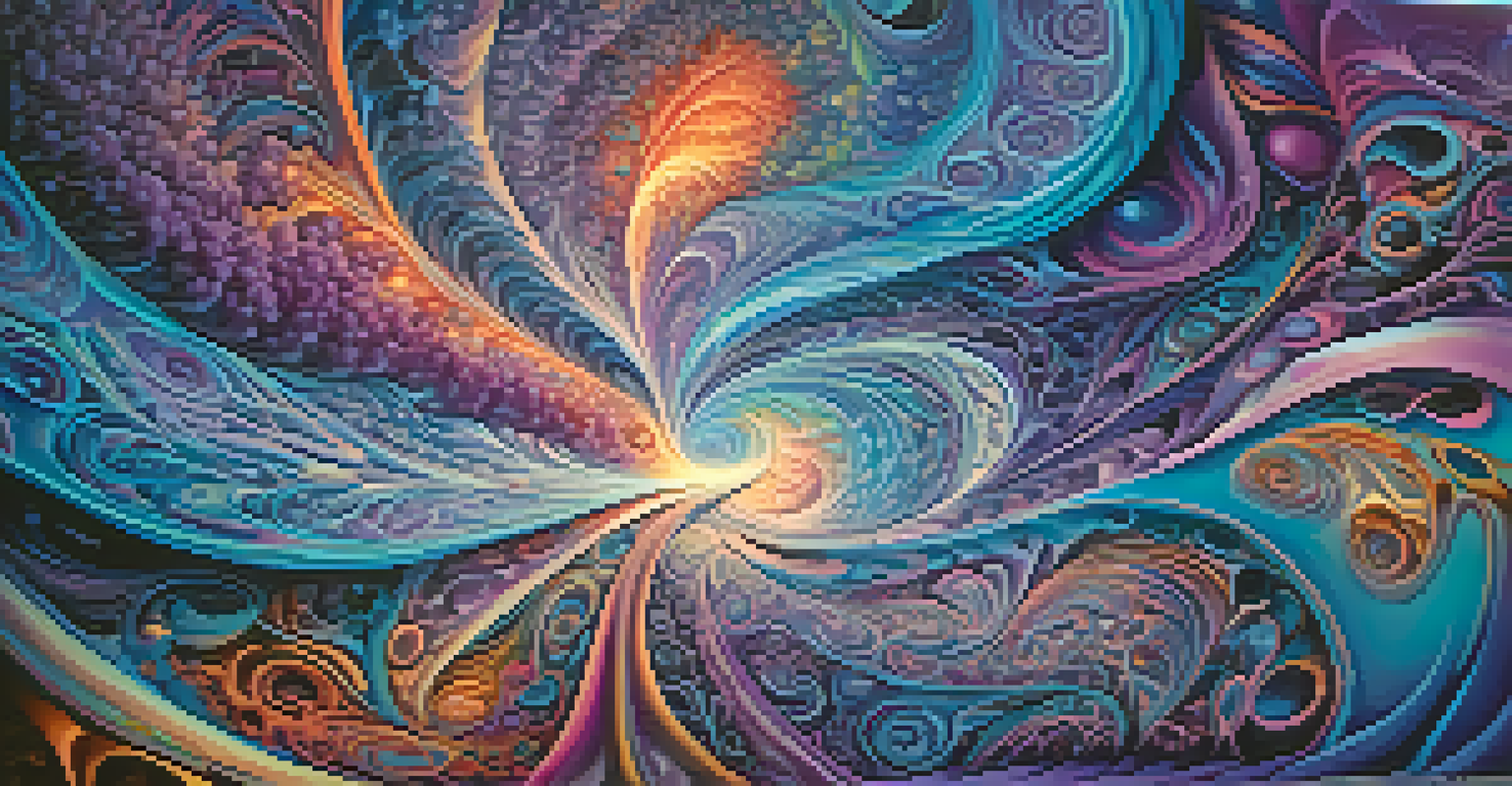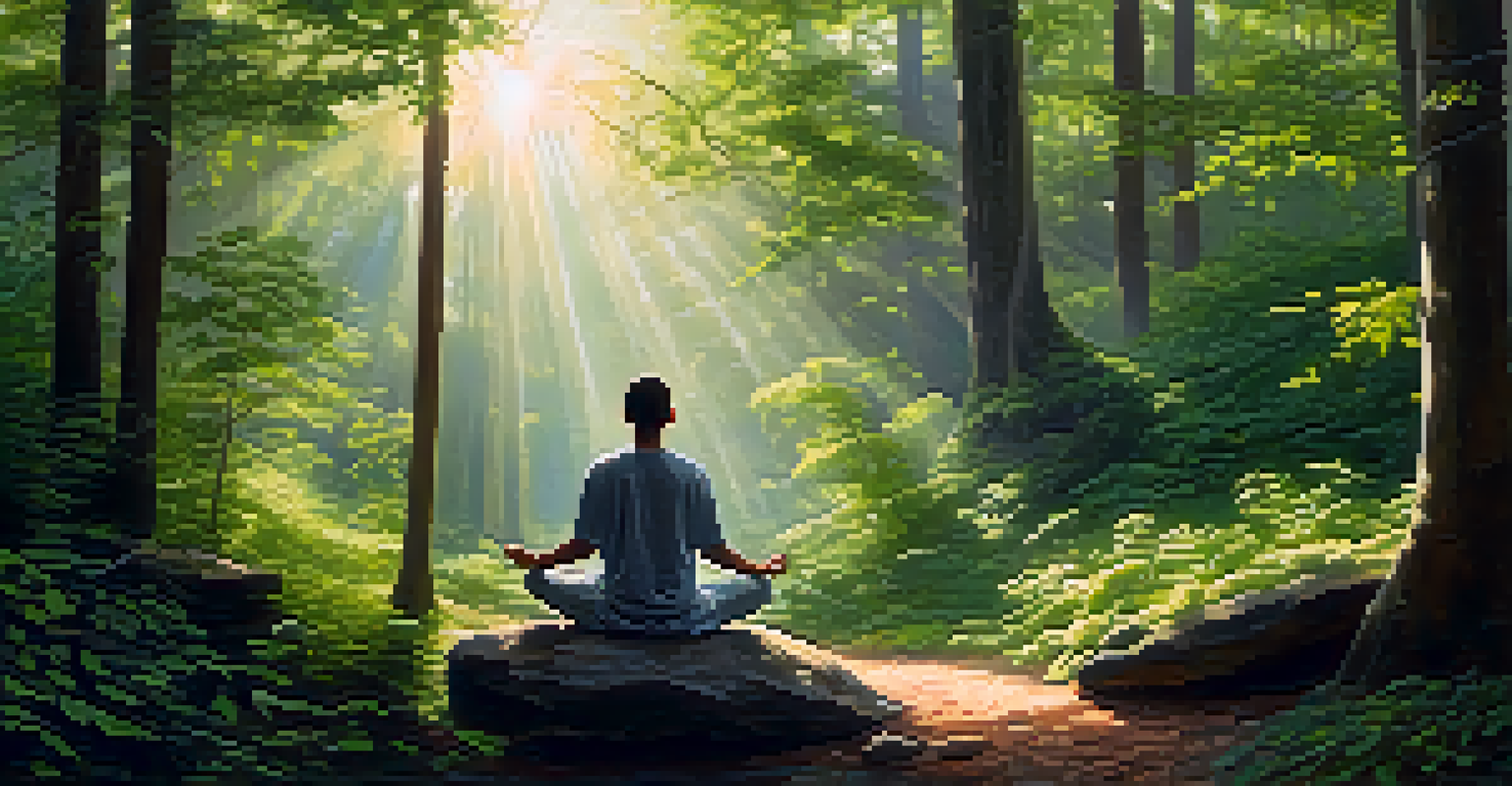Mescaline vs. Other Hallucinogens: A Comparative Overview

Understanding Mescaline: A Unique Hallucinogen
Mescaline is a naturally occurring psychedelic compound found in various cacti, most notably the peyote cactus. Unlike synthetic hallucinogens, mescaline has been used for centuries by indigenous cultures for spiritual and medicinal purposes. This deep-rooted historical significance sets mescaline apart from many other hallucinogens that have emerged more recently.
The psychedelic experience is a journey into the self, where the mind expands and the boundaries of reality blur.
The experience induced by mescaline is often described as vivid and introspective, with users reporting enhanced sensory perception and profound emotional insights. These effects can last anywhere from 10 to 14 hours, making it a longer-lasting option compared to some other psychedelics. This length of experience allows for extended exploration of consciousness, often leading to spiritual revelations.
Furthermore, mescaline tends to have a milder side effect profile than some synthetic alternatives. While it can still cause nausea or anxiety in some users, the overall physical impact is often less intense, providing a more manageable experience for many.
The Role of Psilocybin in the Hallucinogen Landscape
Psilocybin, the active compound in magic mushrooms, offers a different psychedelic experience compared to mescaline. Users often describe psilocybin trips as deeply connected to nature and the universe, with feelings of interconnectedness and unity. The onset of effects is generally quicker than mescaline, usually within 30 minutes, and lasts for about 4 to 6 hours.

Unlike mescaline's earthy and introspective journey, psilocybin is often associated with emotional catharsis and vivid, dream-like visuals. Many users report that psilocybin can lead to transformative insights, making it a popular choice in therapeutic settings for anxiety and depression.
Mescaline's Rich Cultural History
Mescaline has been used for centuries by indigenous cultures for spiritual and medicinal purposes, setting it apart from synthetic hallucinogens.
However, psilocybin experiences can vary significantly based on dosage and individual mindset. While some may find the experience enlightening, others could encounter challenging emotions, illustrating the unpredictable nature of psychedelic substances.
LSD: A Synthetic Alternative to Mescaline
LSD, or lysergic acid diethylamide, is a powerful synthetic hallucinogen that has carved its own niche in the psychedelic world. Much like mescaline, LSD can produce intense visual and auditory hallucinations, but the experience often feels more frenetic and chaotic. LSD trips typically last around 8 to 12 hours, providing a different pacing and flow compared to mescaline.
Psychedelics can help us see the world anew, allowing us to connect with our deeper selves and the universe around us.
Users often describe the LSD experience as a rollercoaster of emotions, with rapid shifts in perception and mood. This unpredictability can make LSD exciting for some but overwhelming for others, especially if they are unprepared for the intensity of the trip. In contrast, mescaline's slower onset and more stable effects can appeal to those seeking a more grounded experience.
Moreover, LSD's legal status and synthetic nature lead to different cultural perceptions compared to mescaline. While mescaline is deeply tied to indigenous practices, LSD is often associated with the counterculture movements of the 1960s and has undergone various phases of stigmatization and acceptance.
DMT: The Short but Intense Hallucinogen
DMT, or dimethyltryptamine, is known for its incredibly short yet profoundly intense experiences, often lasting only 15 to 30 minutes when inhaled. Unlike mescaline, which provides a lengthy journey, DMT's rapid onset and peak can leave users feeling as if they've traveled to another realm before returning to reality. This unique quality makes DMT a fascinating subject of study in the realm of psychedelics.
The visuals experienced during a DMT trip are often described as otherworldly, filled with intricate patterns and vibrant colors. Many users report encountering entities or experiencing a sense of cosmic connection, akin to what some may feel during a mescaline experience but condensed into a much shorter timeframe. This intensity can be both exhilarating and disorienting.
Comparative Effects of Psychedelics
Mescaline offers a sensory-rich journey, while other psychedelics like psilocybin and LSD can lead to emotional and cognitive shifts.
However, the brevity of DMT trips can limit the depth of introspection compared to longer hallucinogens like mescaline. While both substances can provide profound insights, the fleeting nature of DMT often leads to a different type of reflection, focusing more on the immediate experience rather than an extended exploration of consciousness.
Comparing the Effects: Mescaline vs. Other Psychedelics
When comparing the effects of mescaline with other hallucinogens, one of the most notable differences is the nature of the experience. Mescaline often provides a more visual, sensory-rich journey, while substances like LSD and psilocybin can lead to more emotional and cognitive shifts. This distinction can shape how users approach their psychedelic experiences, depending on what they seek.
For instance, those looking for a calming, introspective experience might prefer mescaline, while those wanting to challenge their perceptions or explore deep emotional territory might gravitate towards psilocybin or LSD. It's essential to consider not only the substance but also the setting and individual mindset, as these factors can significantly influence the trip.
Additionally, the preparation and aftercare for each substance may vary. Users of mescaline might focus on grounding practices during and after their trips, while those on DMT may require more time to integrate the rapid and intense experience into their daily lives.
Cultural Significance of Mescaline vs. Other Hallucinogens
The cultural significance of mescaline is particularly pronounced due to its historical use among Native American tribes. For centuries, peyote has been a central element in spiritual ceremonies, symbolizing a connection to the divine and nature. This contrasts sharply with the modern usage of substances like LSD, which emerged from the counterculture movements of the 20th century.
While LSD and psilocybin have gained popularity in contemporary therapeutic and recreational settings, mescaline remains closely tied to its indigenous roots. This connection fosters a unique respect and reverence for the substance, often leading users to approach it with a sense of purpose and intention that may differ from their experiences with synthetic hallucinogens.
Risks and Preparation for Users
Each hallucinogen carries potential risks, making it essential for users to prepare, research, and choose a supportive environment for their experiences.
Moreover, the ongoing dialogue about the legal status and ethical considerations surrounding these substances highlights the need for cultural sensitivity. As more people explore these powerful tools for self-discovery, understanding their origins and the traditions associated with them becomes increasingly important.
Potential Risks and Considerations for Users
While mescaline and other hallucinogens can offer profound insights, it's crucial to acknowledge the potential risks involved. Each substance carries its own set of challenges, from psychological distress to physical side effects. For instance, mescaline can induce nausea, while LSD may lead to anxiety or paranoia in some users, especially in unfamiliar settings.
Furthermore, the unpredictable nature of these experiences means that individuals should be well-prepared and informed before embarking on a psychedelic journey. This could involve researching the substance, setting intentions, and considering the setting in which the experience will take place. A supportive environment can make a significant difference in how one processes the experience.

Lastly, seeking guidance from experienced users or professionals can provide valuable insights into safe usage and integration. As interest in psychedelics continues to grow, fostering a culture of safety and education is essential for ensuring that individuals can navigate their experiences responsibly.